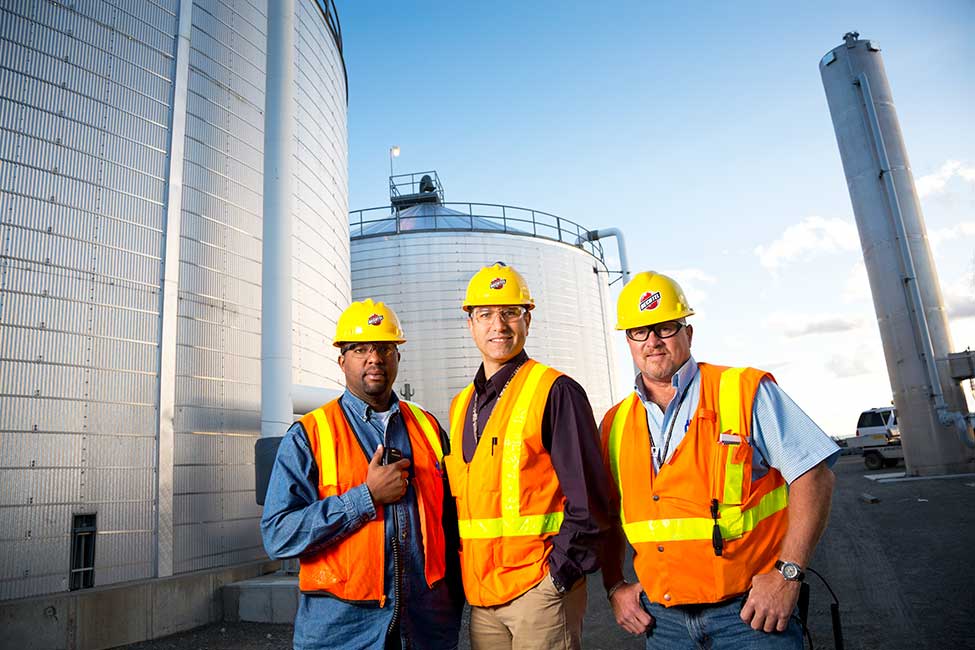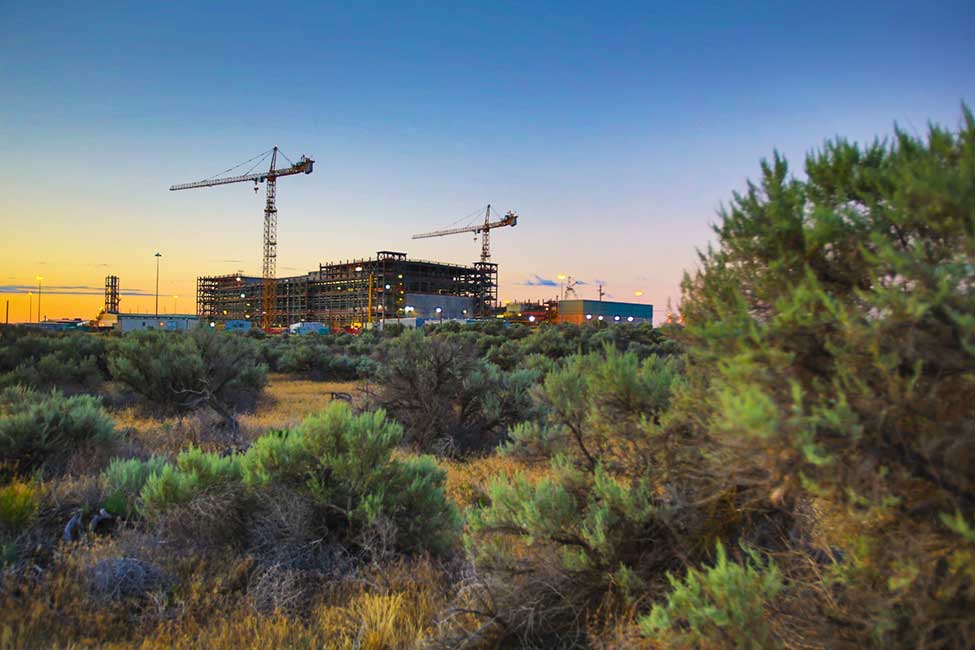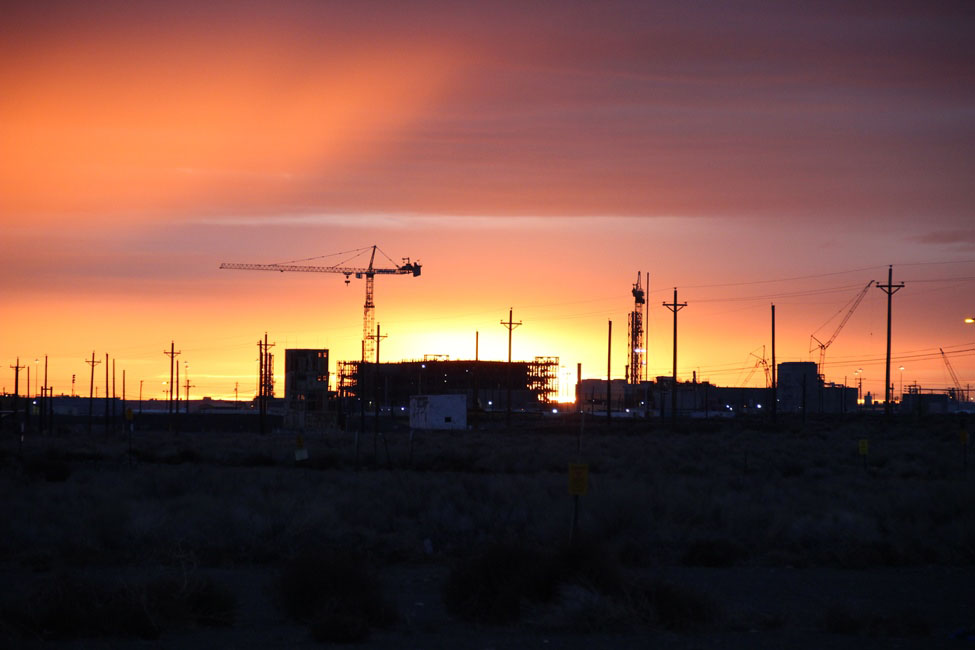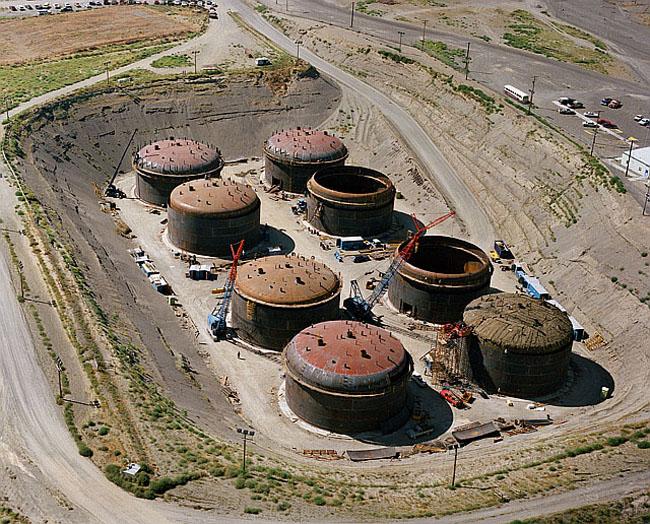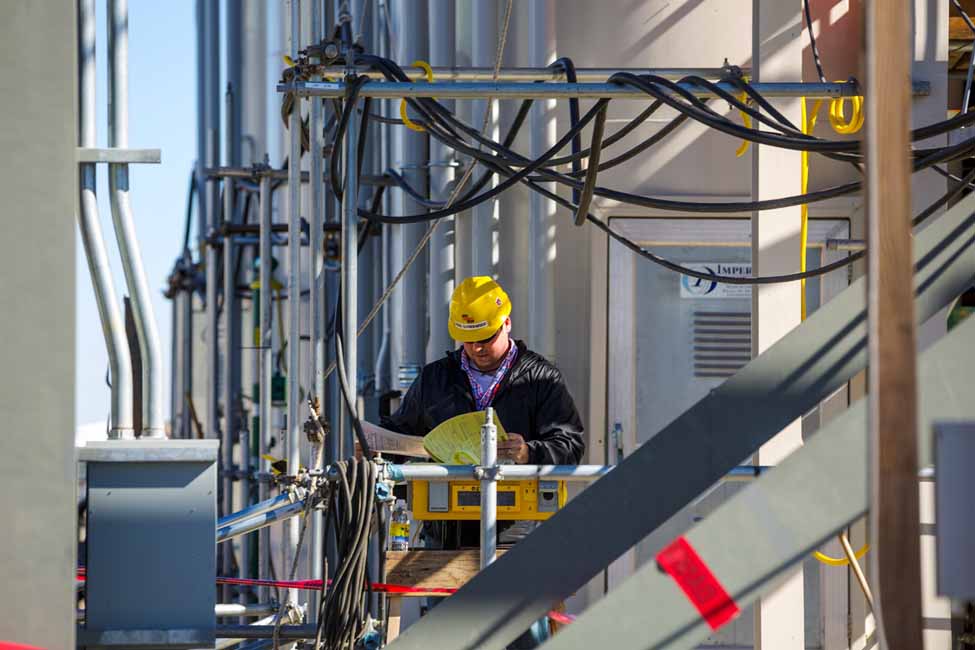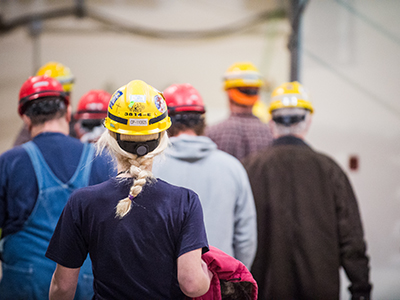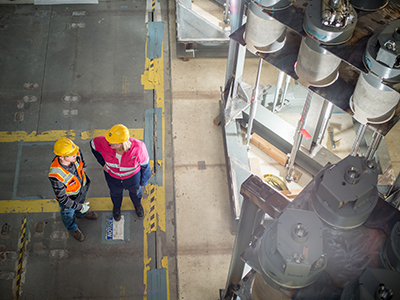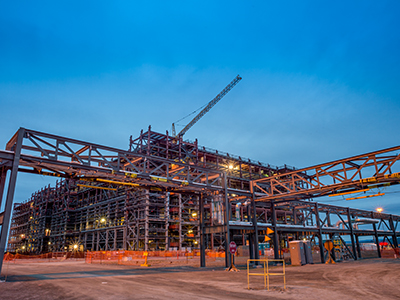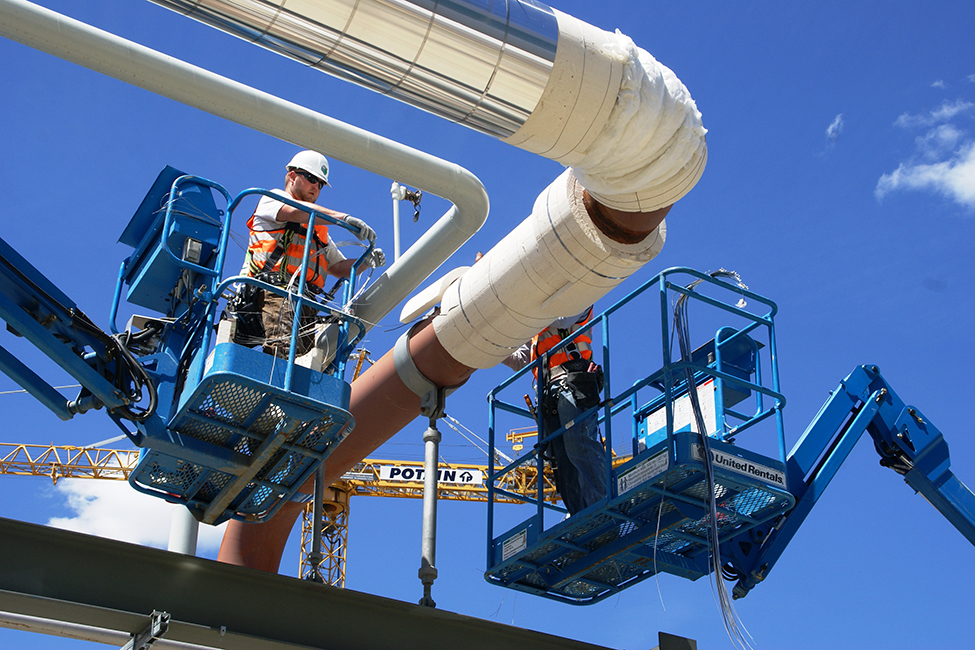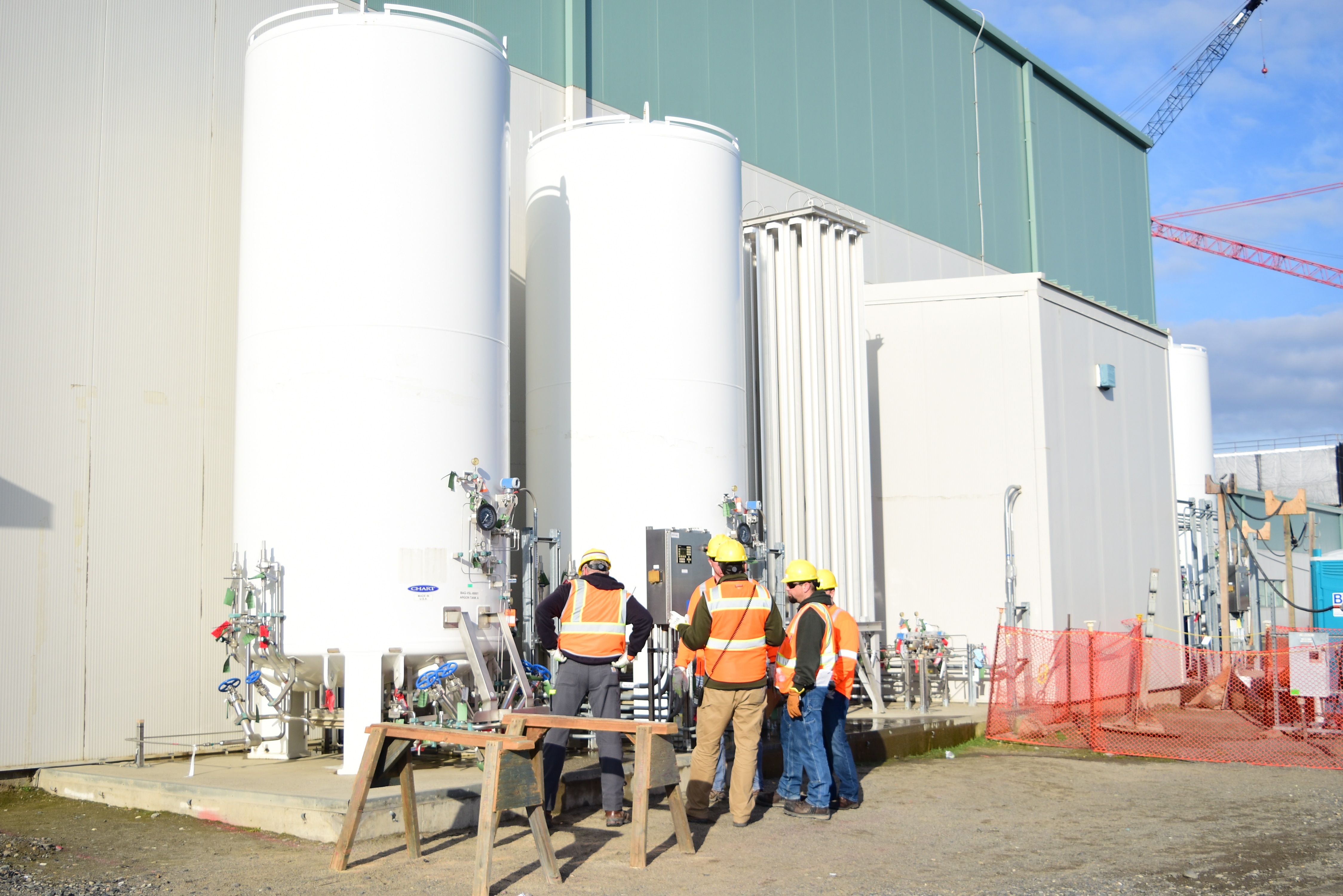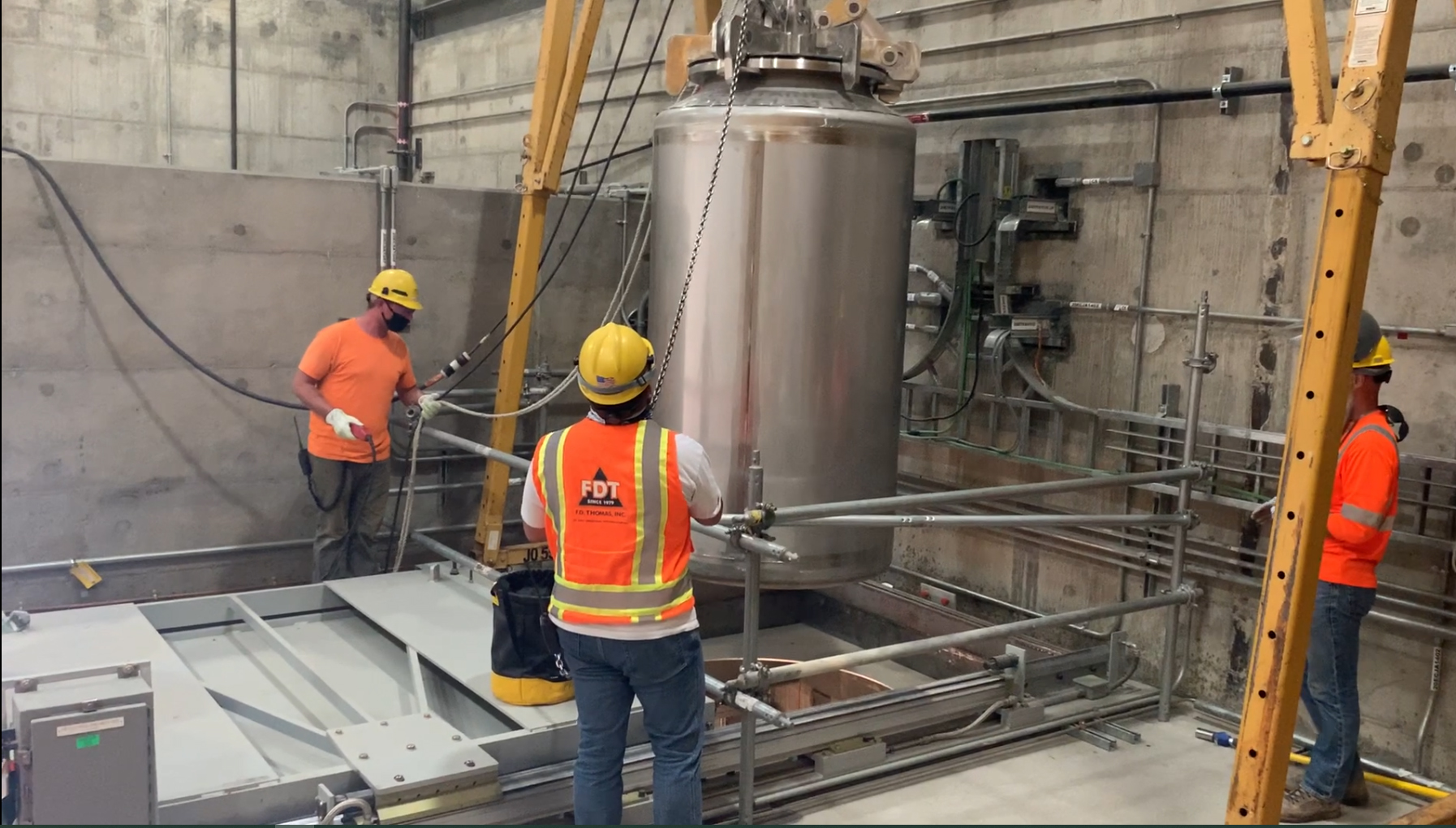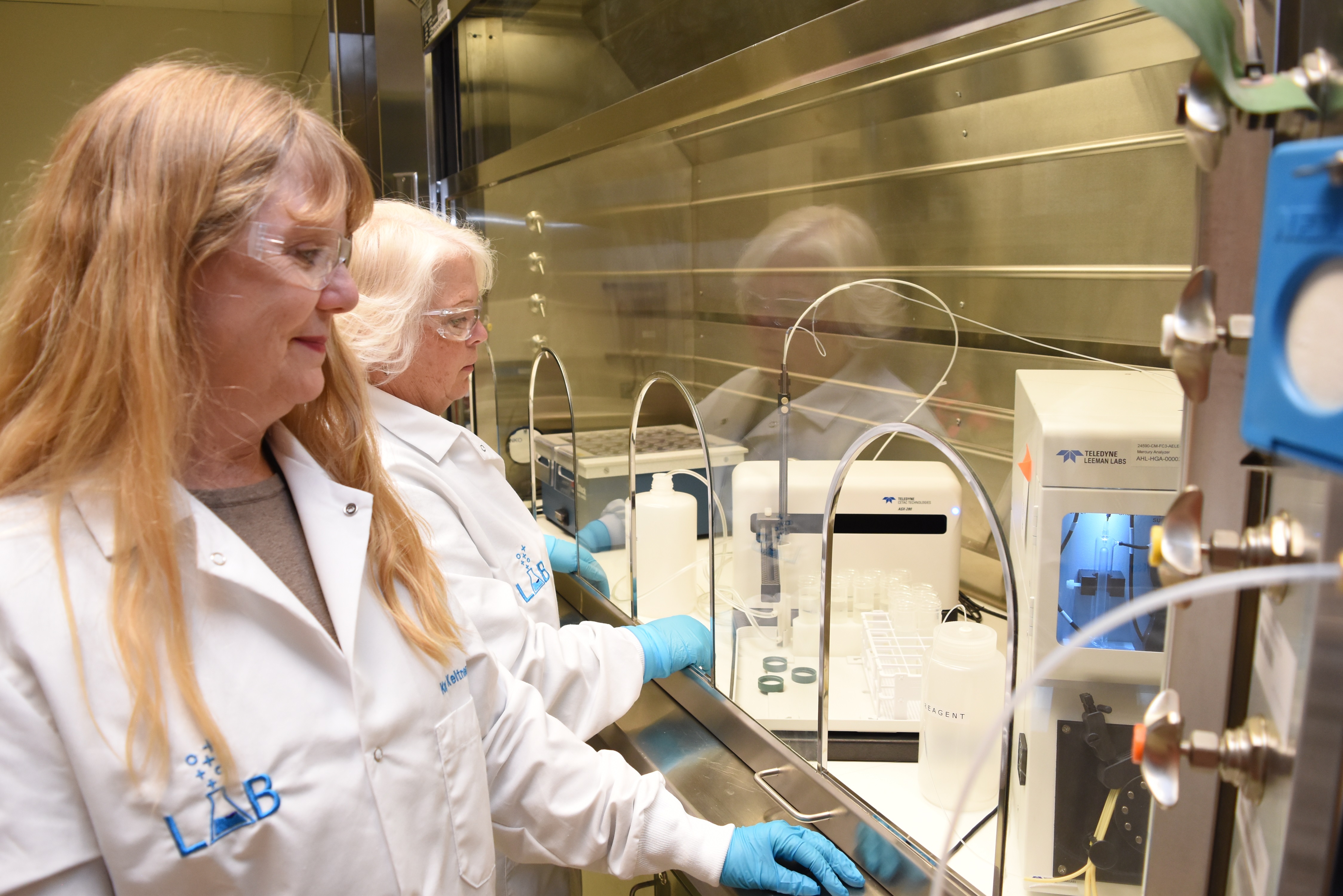Two decades ago, the Department of Energy (DOE) launched a mission to build a one-of-a-kind complex at the Hanford Site in Washington state to transform World War II and Cold War era radioactive and chemical waste into a stable glass form, making this one of the most challenging environmental projects in history. Bechtel is honored to have been chosen as the DOE’s partner, and we’re proud of our thousands of men and women who will deliver this critical project.
The DOE selected Bechtel’s team of engineers to design, construct, and commission this multi-facility complex, known as the Waste Treatment and Immobilization Plant.
Bechtel completed the construction of the Low-Activity Waste Facility in 2021, which will vitrify waste, and the team transitioned into commissioning the plant. In July of 2023, the first of two 300-ton melters, the chosen technology to transform the waste into a stable form, reached its operating temperature of 2,100 degrees Fahrenheit.
The history of treating waste at Hanford
The waste being treated at Hanford dates to the Manhattan Project of the 1940’s. The Hanford site is in southeastern Washington along the longest undammed stretch of the Columbia River.
The site was selected to build reactors that produced plutonium for World War II, and the site continued operating during the Cold War. Between 1943 and 1987, nine reactors were built and used to generate plutonium for the U.S. government.
The production of plutonium created 56 million gallons of radioactive and chemical waste, which was stored in 177 underground single-shell and double-shell tanks at the site. The tanks are corroding and require constant maintenance. Removing the waste from the tanks and converting it to a more stable form is needed to protect the nearby Columbia river. That’s where we come in.
Bechtel is proud to have contributed to solutions for Hanford site projects since the 1990’s. Today’s mission continues that legacy of partnership with the DOE through designing the Waste Treatment and Immobilization Plant, that will treat this legacy waste.
Complex facilities solving complicated problems
The Bechtel-designed facilities at the Waste Treatment and Immobilization Plant (WTP) are currently being completed in two phases, with the first phase being the Low-Activity Waste Facility, currently in commissioning. The High-Level Waste Facility is the second phase.
The WTP facility is sometimes called the Vit Plant because it uses a technique called vitrification that mixes the liquid waste with materials that cool to form solid glass. Vitrification begins with heating glass-forming materials in the melters until they reach a molten state, and then feeding the radioactive and chemical tank waste into that mixture. Once incorporated, the mixture of glass forming materials and waste will be poured into specially designed stainless-steel containers to cool and solidify into glass, or vitrified, form.
In the first phase of operations, WTP's Low-Activity Waste Facility will produce about 1,100 containers of immobilized waste per year, which will be stored at the Hanford Site’s Integrated Disposal Facility.
Building unique facilities to support the team on-site
In addition to the facilities that house the melters, Bechtel has designed extensive facilities to support the site, including an Analytical Laboratory. The Analytical Laboratory, declared Ready to Operate in 2021, will allow team members to characterize waste constituents, verify the material quantities needed to form glass, and confirm that the glass produced by the Low-Activity Waste facility meets regulatory requirements and standards.
Bechtel designed the laboratory to handle the frequent samples that will be taken during plant operations. Approximately 3,000 process samples will be analyzed by the laboratory staff per year to confirm high-quality glass product and good process controls.
Bechtel’s team at the Waste Treatment and Immobilization Plant (WTP)
Bechtel employees have put their expertise, innovations, and resilience toward addressing the unprecedented challenges faced when building a first-of-a-kind multi-facility complex to treat this radioactive and chemical waste.
From employees who have been on the project since it first started over two decades ago, to subject matter experts who have shared their expertise during design, procurement, construction, and commissioning, Bechtel employees have been a key part of progress and innovation at the site.
Success at the Waste Treatment Plant project has come from a collaborative approach with our customers, our team, our partners, and the local community.
Serving the local community
Throughout the last 20 years, Bechtel has formed relationships with the local Tri-City communities of Richland, Pasco, West Richland, and Kennewick.
Bechtel’s WTP team regularly engages with local charitable organizations through volunteering and sponsorships. Key partnerships in the local community include:
- WSU Tri-Cities Tutoring Center
- Hanford REACH Interpretive Center
- United Way of Benton and Franklin Counties
- Junior Achievement
- Boys & Girls Club of Benton and Franklin Counties
- Friends of Badger Mountain


